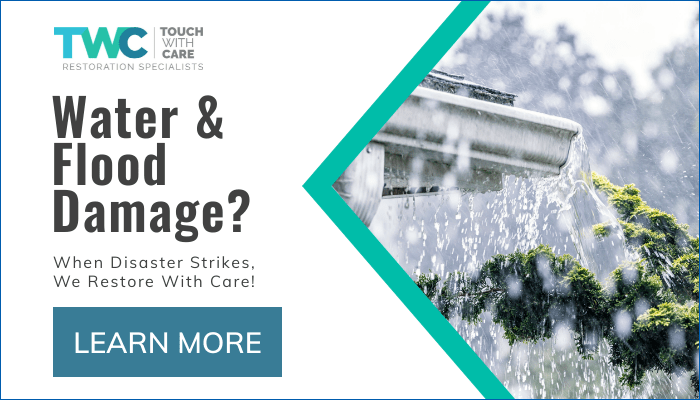 Water damage restoration is costly and time-consuming. Here’s how to prevent leaks and water damage.
Water damage restoration is costly and time-consuming. Here’s how to prevent leaks and water damage.
Water accounts for half of all Canadian home insurance claim costs, beating out theft and fire. The threat of water damage comes from both inside and outside the home, but there are plenty of preventative steps you can take to keep your home safe and dry!
Here are the best ways to stop flooding and leaks in their tracks and avoid expensive water damage restoration!
1. Keep an eye on your roof
Roof leaks can start small and unseen, leading to extensive damage over time. Attic insulation becomes wet, leading to rot and mold growth, in addition to a weakened roof structure. Have your roof inspected occasionally and repair damaged or missing shingles as soon as possible. Rubber and asphalt shingles generally last a minimum of 15 years, so if your roof is nearing the end of its lifespan, it’s best to replace it.
2. Clear gutters and downspouts twice a year
Leaves, twigs, pine needles and other debris can build up in your gutters, leading to clogged and sagging gutters, mold growth, a leaky roof or water damage. It’s recommended to clean your gutters twice a year, usually in the late spring and then again in the fall. Besides removing large debris, flush your gutters with a garden hose to remove smaller particles and check your downspouts for blockages. Rusted, sagging or cracked sections of the gutter should be repaired to prevent water damage to your home.
3. Small leaks hurt big
Ten percent of homes have water leaks that waste more than a bathtub full of water every day. And it’s so easy to underestimate how much these silent leaks are costing you. The City of Toronto says a nail-sized hole in your plumbing can cost you $60 a day, while a leaky toilet can run you up to $85 a day. An easy way to catch these leaks is to track your monthly water bill, as a sudden jump with no corresponding increase in water use can signify a problem.
Check plumbing and appliances for leaks, especially washing machines, dishwashers, fridges, and other water-using appliances. Pay close attention to their hoses and replace brittle or broken ones quickly. It’s also a good idea to periodically pull your appliances away from the walls or cupboards and look for signs of water damage in the surrounding area.
4. Use flood detection devices
Zigbee-powered flood detection sensors detect moisture and wirelessly alert you to leaks and flood damage in real-time, avoiding any water damage restoration efforts. You can install them near water heaters, under appliances, or in basements or bathrooms.
5. Know where your main water shut-off is
In the event of a main pipe bursting, large amounts of water can flood your home in minutes. Knowing the location of your home’s main shut-off valve will let you react quickly and limit the amount of water damage. Make sure every member of your family knows where it’s located as well, along with your toilet shut-off valves.
Protect your home
When it comes to preventing costly water damage restoration, defense is the best offense. These tips will help prevent damage to your home from harsh weather events or defective plumbing.
Need a restoration specialist? Touch With Care’s highly experienced team is prepared to act quickly across Toronto and Mississauga. We respond within the hour to limit the possibility of water damage, electrical dangers, the growth of mould and bacteria, and structural harm to your home or business. Contact us when disaster strikes.



